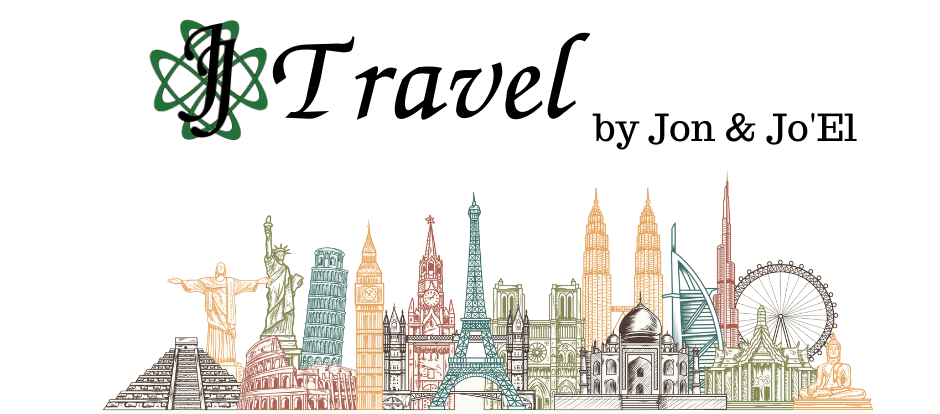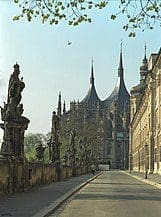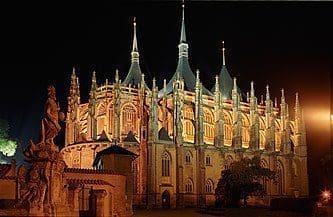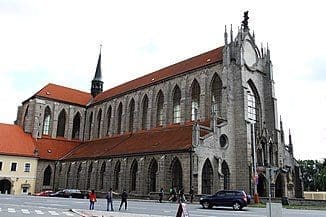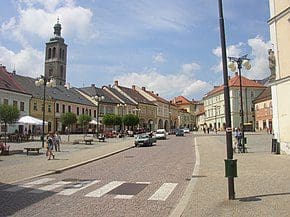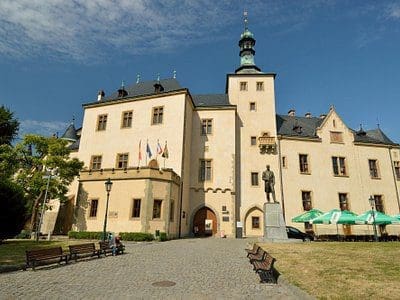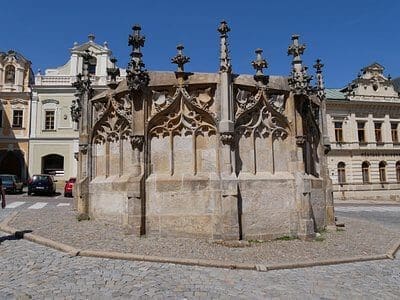The City of Kutna Hora
Kutna Hora is a city east of Prague in the Czech Republic. It’s known for the Gothic St. Barbara’s Church with medieval frescoes and flying buttresses. Also notable is Sedlec Ossuary, a chapel adorned with human skeletons. On the site of a former Cistercian monastery is the Gothic and baroque Cathedral of the Assumption. The Czech Museum of Silver recalls the city’s silver-mining history with a replica medieval mine.
Visit the historical Town Center with the UNESCO World Heritage Site, Church of St. Barbara, and the Cathedral of Our Lady at Sedlec.

The town began in 1142 with the settlement of Sedlec Abbey, the first Cistercian monastery in Bohemia. The Cistercian order based in the Sedlec Monastery was brought from the Imperial immediate Cistercian Waldsassen Abbey in Bavaria, Germany, close to the border with the Czech Republic. By 1260, German miners began to mine for silver in the mountain region, which they named Kuttenberg, and which was part of the monastery property. The name of the mountain is said to have derived from the monks’ cowls (the Kutten) or from the word mining.
Middle Ages
From the 13th to 16th centuries, the town competed with Prague economically, culturally, and politically. Under Abbot Heinrich Heidenreich, the territory prospered due to the silver mines which gained importance during the economic boom of the 13th century.
In 1300, King Wenceslaus II of Bohemia issued the new royal mining code Ius regale montanorum (also known as Constitutiones Iuris Metallici Wenceslai II). This was a legal document that specified all administrative as well as technical terms and conditions necessary for the operation of mines. Prague groschen was minted between 1300 and the late 1540s.
In December 1402, the town was sacked by King Sigismund after the imprisonment of Wenceslaus IV. It was heavily defended by its residents. After several bloody skirmishes, Sigismund prevailed and forced the defenders to march to KolÃn and kneel in subjugation. Although Sigismund was successful in his conquest, his hetman Markvart of Ulice died after being struck by an arrow during the siege on December 27th.
The town developed with great rapidity, and at the outbreak of the Hussite Wars in 1419 was the second most important town in Bohemia after Prague, having become the favorite residence of several Bohemian kings. It was here that, on January 18, 1409, Wenceslaus IV signed the famous Decree of Kutna Hora, by which the Czech university nation was given three votes in the elections to the faculty of Prague University as against one for the three other nations.
In 1420, Sigismund made the town the base for his unsuccessful attack on the Taborites during the Hussite Wars, leading to the Battle of Kutna Hora. Kuttenberg (Kutna Hora) was taken by Jan Zizka, and after a temporary reconciliation of the warring parties was burned by the imperial troops in 1422, to prevent its falling again into the hands of the Taborites. Zizka nonetheless took the place, and under Bohemian auspices, it awoke to a new period of prosperity.
Modern Era
Along with the rest of Bohemia, Kuttenberg (Kutna Hora) passed to the Habsburg Monarchy of Austria in 1526. In 1546, the richest mine was severely flooded. In the insurrection of Bohemia against Ferdinand I the town lost all its privileges. Repeated visitations of the plague and the horrors of the Thirty Years’ War completed its ruin. Half-hearted attempts after the peace to repair the ruined mines failed; the town became impoverished, and in 1770 was devastated by fire. The mines were abandoned at the end of the 18th century.
In May 1742 during the First Silesian War, a Prussian force under Frederick the Great stopped in the town prior to the Battle of Chotusitz.
Bohemia was a crownland of the Austrian Empire in 1806 and remained controlled by the Austrian monarchy after the compromise of 1867. Until 1918, Kuttenberg was the capital of the district of the same name, one of the 94 Bezirkshauptmannschaften in Bohemia. Together with the rest of Bohemia, the town became part of the newly founded Czechoslovakia after World War I and the collapse of Austria-Hungary.
Kutna Hora was incorporated into the Protectorate of Bohemia and Moravia by Nazi Germany in the period 1939 – 1945 but was restored to Czechoslovakia after World War II. The town became part of the Czech Republic in 1993, after the dissolution of Czechoslovakia.
The Main Sights to See
The city of Kutna Hora is a short one-hour train ride from Prague and makes a wonderful day trip while you are in the area. Must-sees, while you are visiting, would be the Sedlec Ossuary, the Czech Museum of Silver, St. Barbara’s Cathedral, Church of the Assumption of Our Lady and Saint John the Baptist, Church of St. James, Church of St. John Nepomuk, Church of Ursuline Convent, Jesuit College, Italian Court, and the Marian column.
